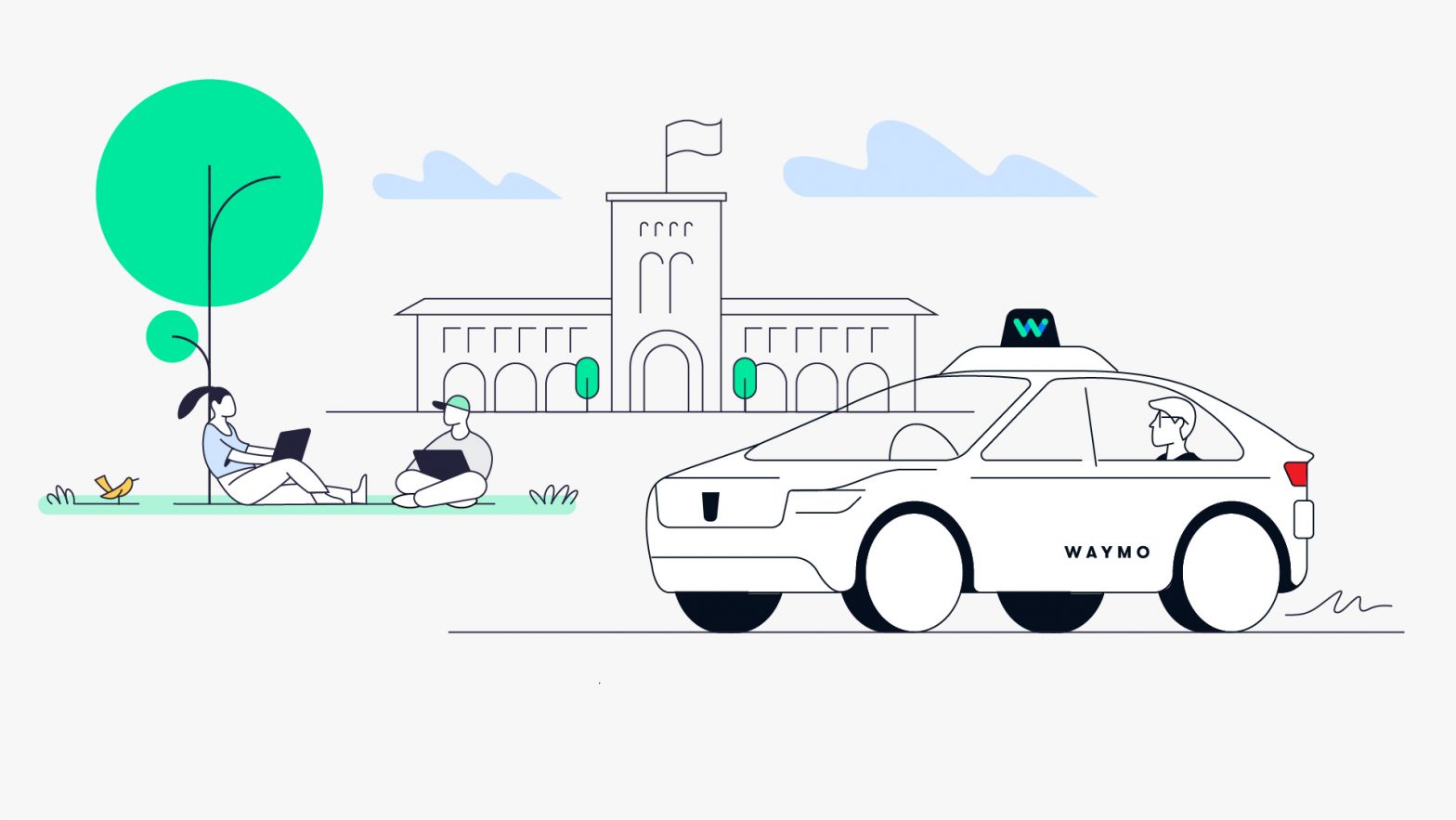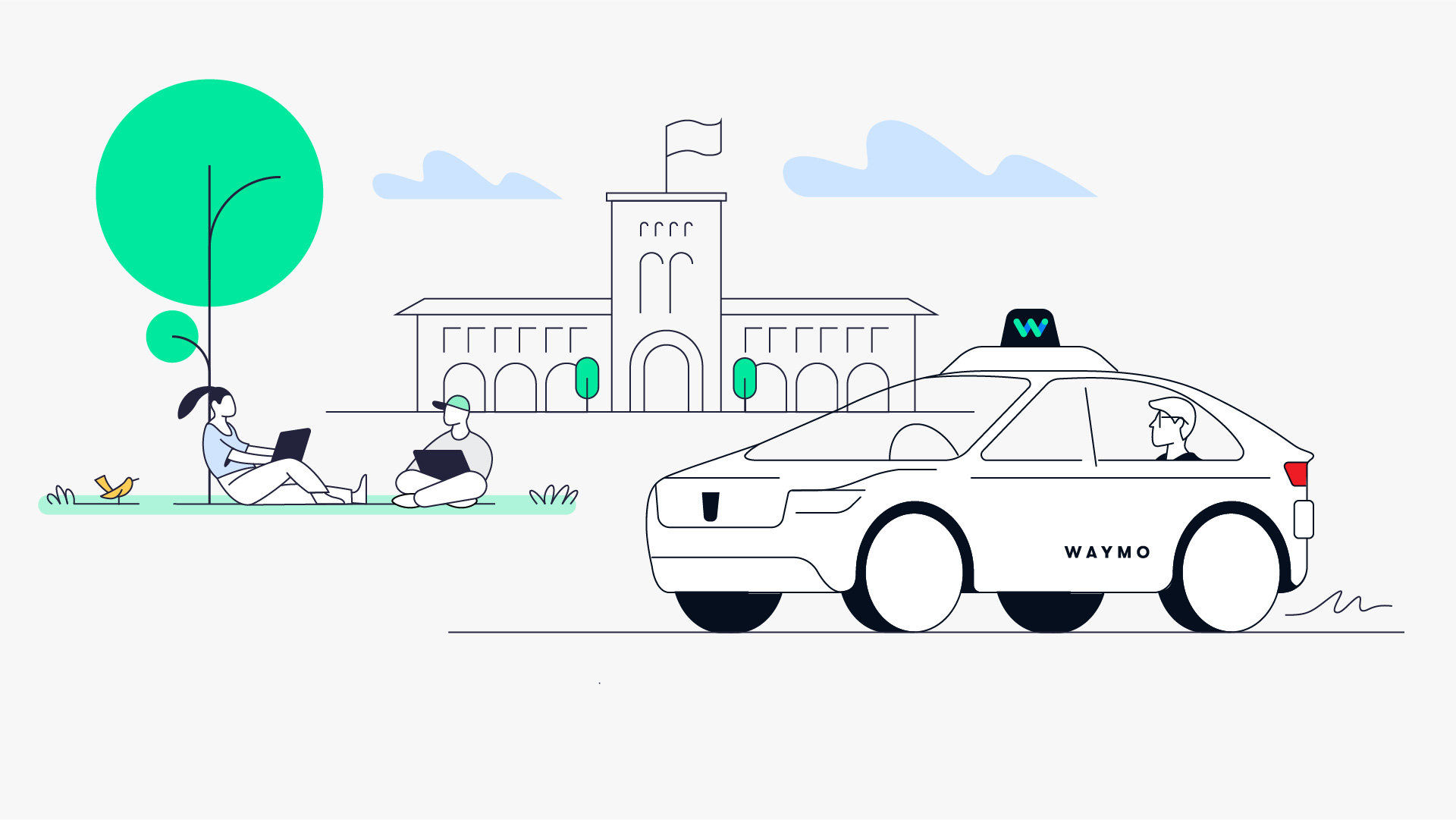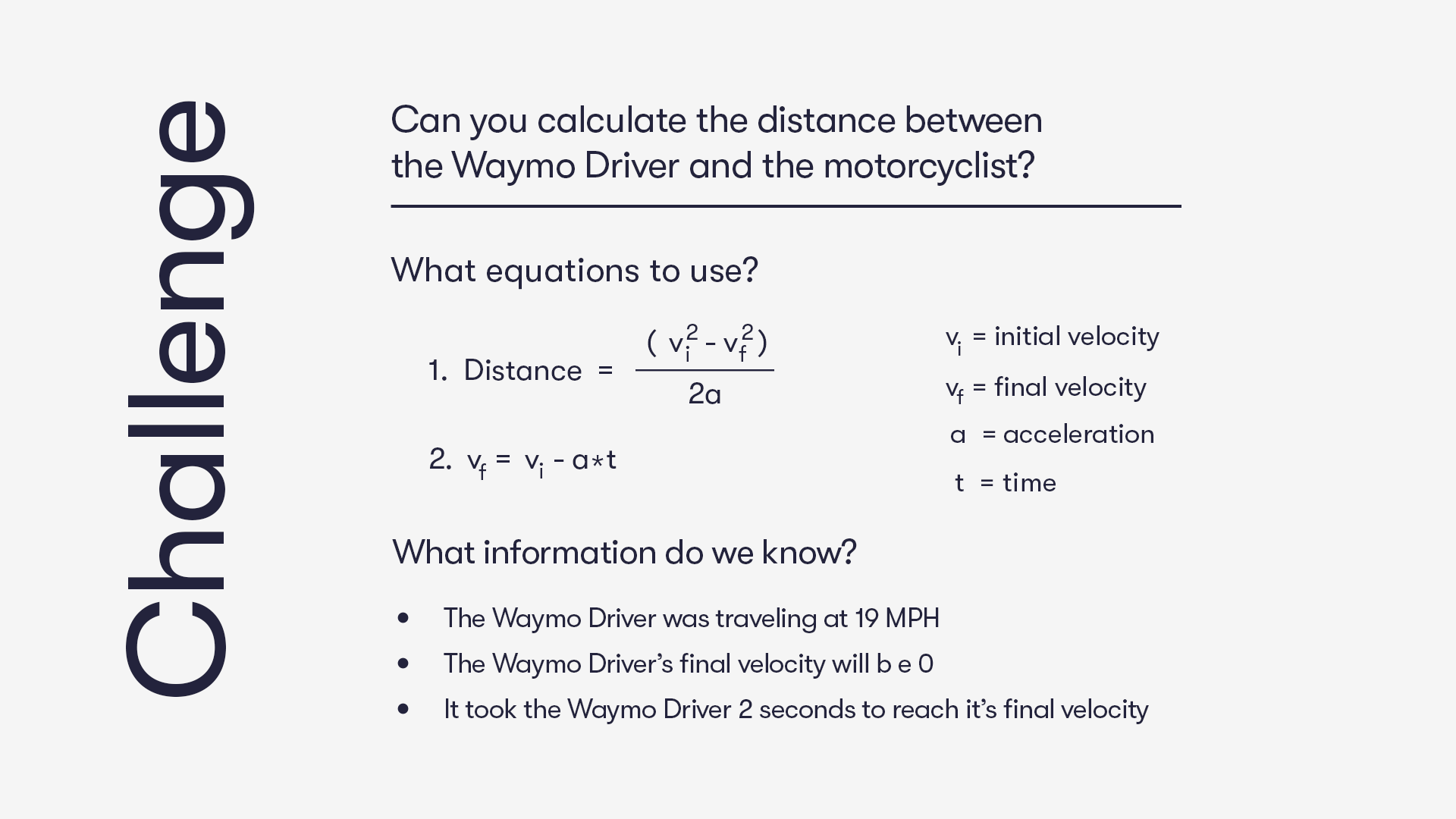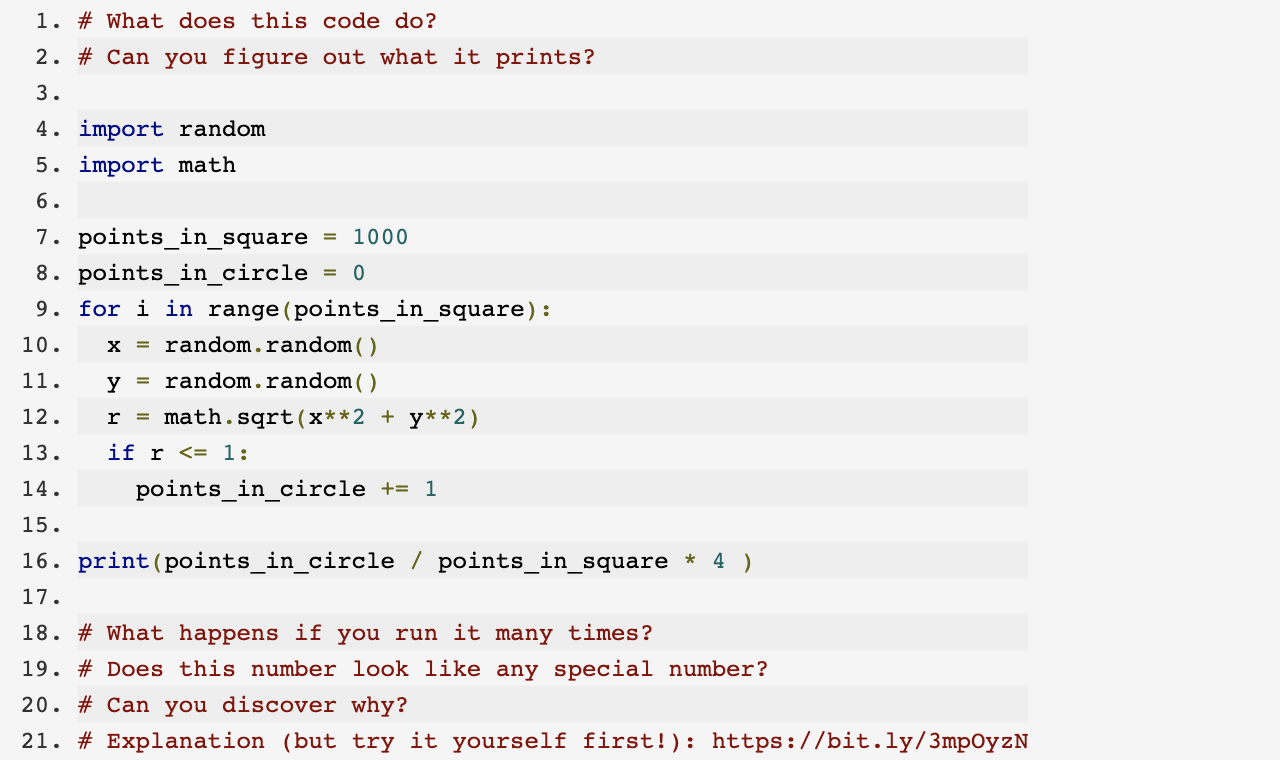The school year is quickly approaching and students will be sitting in a class once again, whether at home or in person. In fact, some students are already back in session! Some classes will completely absorb them in the material and others will have them wondering “when will I ever use this information again?” or “ how will I use this in the real world?” Well, it’s time to put an end to those age-old questions! We talked to three Waymonauts across the company about what foundational knowledge they learned in high school that they still use today at Waymo.
Jenny is a Software Engineer on the Planner Team. The Planner team teaches the Waymo Driver how to decide on a path to take that is safe, comfortable, and makes progress towards a destination. In Jenny’s role, it’s important to understand how things interact and how humans react; therefore, she frequently uses the same kinematic equations she learned in her high school physics class. Take this video of a motorcyclist pulling out in front of the Waymo Driver, for example. What is the minimum distance between them?
The Planner team works with basic physics, and variations of the above problem, regularly. The Waymo Driver has to calculate these equations for every object in a scene every time it wants to do something. So Jenny and her team members are constantly improving and optimizing the algorithms we use to do this on the vehicle.
The autonomous vehicle industry was not on the horizon when she was growing up, but she always had a love for math and science. She loved participating in math competitions and dreamed of being a mathematician. While many may struggle with math in middle or high school, Jenny assures that math looks very different as you move up each level. If you don’t like the type of math you’re in right now, it may just not be the flavor for you! Her advice to approaching complex math problems is to contextualize them. For example, fractions may seem overwhelming in class but when you’re splitting a watermelon with friends, it seems very simple.
Luke is a Program Manager on Waymo’s User Experience Research and Design teams. His team’s job is to figure out the best way for people to interact with Autonomously Driven Vehicles (ADVs) and how to make riders safe and comfortable. They measure an ADV’s impact through a lot of qualitative and quantitative research such as interviews and surveys in the most unbiased way possible. Luke grew up with dreams of being a pro-athlete or a journalist, and in school he loved ceramics class. He credits his high school journalism teacher for being an inspiration as she always went the extra mile to make sure her students had the best experience. The writing skills he developed in school has served him well in his position where clear communication is vital for building a great user experience. However, he acknowledges it didn’t come naturally to him, it took a lot of hard work and practice over time.
Without a human driver in the car, there are a lot of communication gaps to fill with riders. A driver might be able to give you a call and describe where they’re parked, remind you to put on your seatbelt, alert you that a cyclist is passing by when you exit, and that only touches the tip of the iceberg. In these instances, the User Experience team has to fill a lot of those communication gaps. His team spends a lot of time balancing the right level of clarity and urgency in all of our communications with riders. For example, if you worked at Waymo, what would you say to remind riders to buckle up?
One of Luke’s favorite examples of clear concise writing is from Waymo’s riding tips video providing riders guidance and gentle reminders, such as buckling their seat belt, as they embark on what is for many, a new and soon to be familiar experience. In the video, Luke and his team want to acknowledge that riders may be excited or nervous, but safety remains the number one priority.
Pepe joined Waymo over a year ago as an Embedded Software Engineer, writing software for our custom electronic board and sensors, specifically for the Positioning Team which is responsible for determining the position of the car relative to the world. Growing up he wanted to be a paleontologist, but after experimenting with programming his first video game, he realized that he could do bigger things with programming, like having the ability to literally make things come to life with movements and actions he codes. In fact, he still uses a lot of the math he learned in high school every day at Waymo such as determining the derivative, or rate of change, of a vehicle’s speed.
With a hunger to learn more code, Pepe took online courses at Stanford which is where he discovered the power of online learning. He believes it is great for continuing and learning new skills.
His advice to any student today: “Gain exposure to as many activities as your school has to offer, like math, robotics, or debate club. When you’re able to expose yourself to as many things as possible, you will be able to find your passion.” If he could go back, he wishes someone would’ve told him “what you will study doesn’t define who or what you’ll be.” He recalls there’s a lot of pressure, but reassures that “whatever you study will really just be a tool you’ll use to do whatever you want.”
We at Waymo wish you all a great start to your school year and hope you remember that you never know how you’ll use what you learn now down the road.







